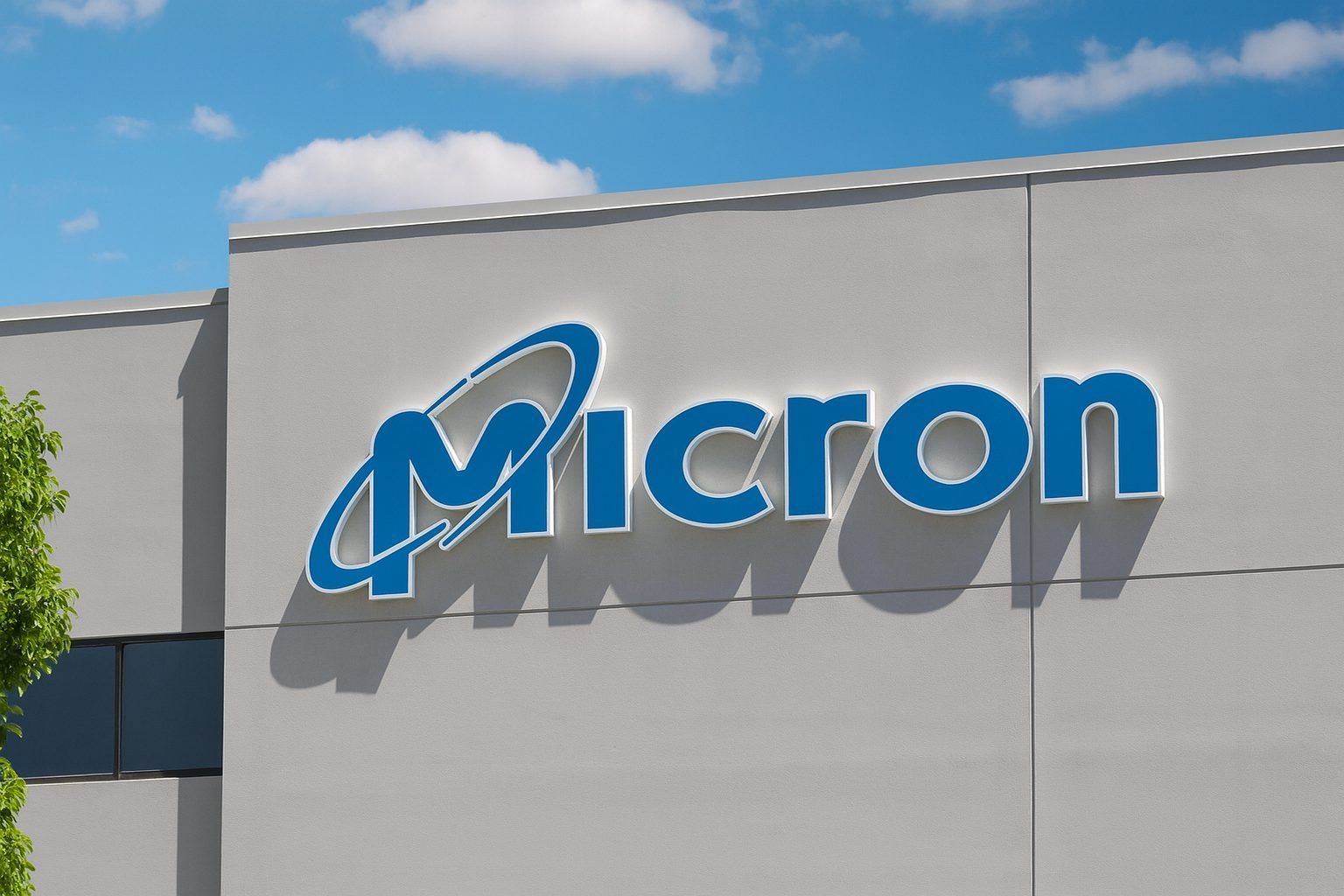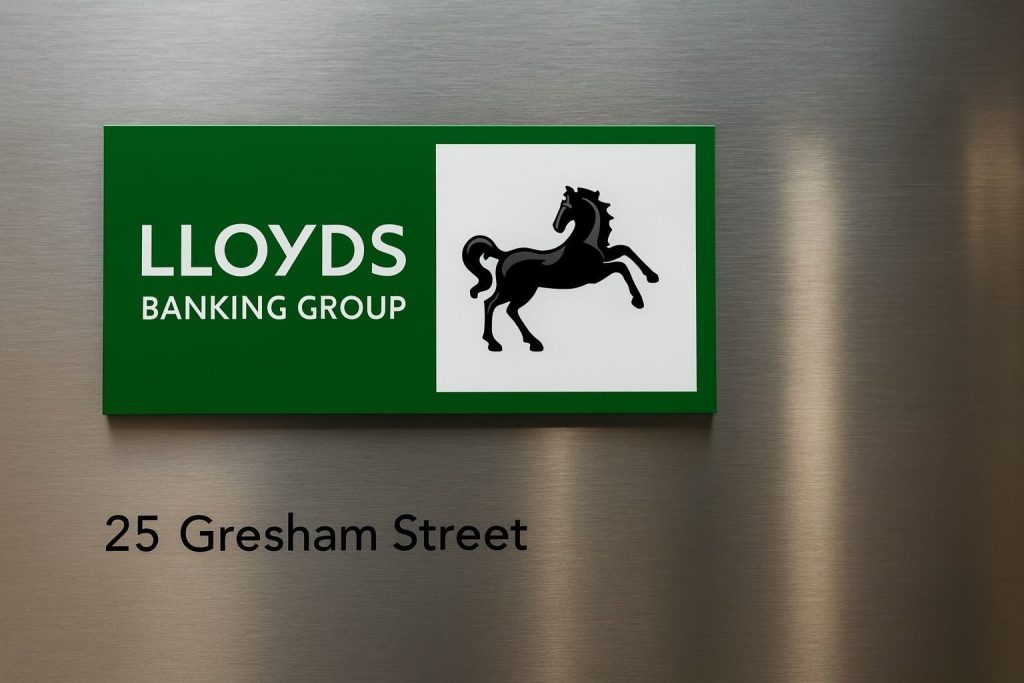Micron Technology, Inc. (NASDAQ: MU) is back in the spotlight this Friday after Thanksgiving, with the stock extending its powerful 2025 rally as investors lean into the AI memory boom.
In late‑morning U.S. trading on November 28, 2025, Micron shares were changing hands around $236 apiece, up roughly 2.6% from Wednesday’s close of $230.26, putting the stock near the top of the S&P 500 leaderboard in a thin holiday session. [1]
According to Barron’s, Micron is the best performer in the S&P 500 today, buoyed by strong demand for memory hardware and reinforced by upbeat commentary from major PC and server makers Dell Technologies and HP about rising memory costs. [2]
Micron’s move today comes on top of an already extraordinary year. The stock has:
- Soared about 174% in 2025, making it one of the market’s standout semiconductor names. [3]
- Traded as high as $260.58 on November 17, 2025 – an all‑time high – versus a 52‑week low near $61.54, meaning the shares are still close to four times their level from a year ago. [4]
Behind the price action is a rapidly changing business: Micron has transformed from a cyclical memory supplier into a core enabler of AI data centers through high‑bandwidth memory (HBM), advanced DRAM, and SSDs. Management now describes Micron as the only U.S.-based manufacturer of memory and a key beneficiary of a “trillions of dollars” AI capex wave. [5]
Micron stock price today: quick snapshot
Key numbers for MU as of Friday, November 28, 2025 (midday U.S. trading):
- Last price: about $236 per share, up roughly 2.6% on the day. [6]
- Previous close:$230.26 (November 26, 2025 – U.S. markets were closed on Thanksgiving). [7]
- Intraday range: roughly $233–$238, based on early trading data. [8]
- 52‑week range: about $61.54–$260.58, with the high set on November 17, 2025. [9]
- Market capitalization: around $259–265 billion, depending on the quote source and exact intraday price. [10]
- Trailing P/E ratio: roughly 30× earnings over the last 12 months (various providers show ~29–31×). [11]
- Forward P/E: generally in the low‑teens (around 11–15×) based on 2026–2027 earnings estimates. [12]
On valuation alone, Micron is no longer the deep‑value cyclical it once was – but the market is clearly willing to pay a higher multiple for what increasingly looks like a structural AI growth story rather than a typical memory cycle. [13]
Why Micron stock is rallying today
Today’s move is being driven by a mix of macro demand signals, supply tightness, and bullish Wall Street positioning.
1. Dell and HP just validated the “memory bull case”
Barron’s reports that Dell and HP both highlighted rising memory component costs in their latest earnings, a strong signal that DRAM and NAND suppliers like Micron are enjoying tight supply and improving pricing power. [14]
- Dell beat earnings estimates and issued robust guidance for upcoming quarters, with management explicitly citing higher memory costs in servers and PCs. [15]
- HP, meanwhile, guided to lower‑than‑expected 2026 earnings in part because of rising memory prices – an apparent headwind for PC makers but a tailwind for Micron’s margins. [16]
Benzinga notes that Micron shares are trading higher specifically on “possible continued momentum after Dell reported third‑quarter earnings and issued strong guidance,” as investors treat Dell’s update as a proxy for broader tech and data‑center demand. [17]
2. DRAM and HBM markets are tightening fast
A fresh report from TrendForce this week underscores how quickly the memory cycle has flipped from glut to shortage:
- Global DRAM industry revenue jumped 30.9% quarter‑over‑quarter in Q3 2025, reaching $41.4 billion. [18]
- Micron’s DRAM revenue in Q3 (calendar) climbed to about $10.65 billion, with its DRAM market share up 3.7 percentage points to 25.7%, solidifying its No. 3 position behind SK hynix and Samsung. [19]
- TrendForce expects DRAM contract prices to rise by roughly 45–50% quarter‑over‑quarter in Q4 2025, and combined DRAM+HBM contract prices to jump 50–55%, as supplier inventories are “almost depleted.” [20]
For a company like Micron, which now derives the bulk of revenue from DRAM and HBM, that kind of pricing environment is extremely powerful for margins and earnings.
3. Wall Street is leaning in – with a Street‑high $338 target
The recent pullback in memory stocks earlier in November prompted a wave of analyst upgrades and price‑target hikes:
- Morgan Stanley now sees Micron as a top way to play “intensifying shortages” in memory, lifting its price target from $325 to a Street‑high $338 and maintaining an Overweight rating. [21]
- UBS reiterated its Buy rating and raised its target from $245 to $275, while Wells Fargo, Rosenblatt, Mizuho and Citi have all taken targets into the $265–300 range over the last month. [22]
- Aggregators like MarketBeat, TipRanks, StockAnalysis and Investing.com all show average 12‑month price targets clustered roughly between $205 and $230, with the high end at $338 and the low end near $84–107. [23]
Interestingly, because Micron’s share price has run so far, most consensus targets now sit slightly below today’s price – signaling that while analysts are broadly bullish (many call it a “Strong Buy”), the bar for further upside is getting higher. [24]
4. Credit upgrade and institutional buying
Beyond equity analysts, Micron is also winning votes of confidence from credit and institutional investors:
- S&P Global Ratings recently upgraded Micron’s outlook to “Positive” (while affirming a BBB‑ rating), citing AI‑driven scale, stronger profitability and a solid balance sheet. [25]
- Filings tracked by MarketBeat show fresh or increased stakes in Micron from institutions including Inceptionr LLC, the State Board of Administration of Florida Retirement System, and Corsair Capital Management, among others. [26]
When you combine tight supply, rising prices, analyst enthusiasm, a credit‑rating tailwind and visible institutional demand, it’s easier to understand why MU is squeezing higher into year‑end despite already spectacular gains.
Earnings momentum: record year and AI‑heavy mix
Micron’s fundamentals have changed almost as dramatically as its share price.
Fiscal 2025: a year of records
For its fiscal fourth quarter (ended August 29, 2025), Micron reported: [27]
- Revenue of $11.3 billion, up 22% sequentially and 46% year‑over‑year – a quarterly record.
- Non‑GAAP EPS of $3.03, up nearly 60% from the prior quarter and over 150% from a year ago.
- Gross margin of 45.7%, up 670 basis points sequentially, helped by better DRAM pricing, product mix and cost reductions.
For fiscal 2025 overall, Micron delivered:
- Revenue of $37.4 billion, up about 49% year‑over‑year.
- Gross margin around 41%, up roughly 17 percentage points from fiscal 2024.
- Non‑GAAP EPS of $8.29, more than five times the prior year’s level.
- Free cash flow of $3.7 billion, about 10% of revenue, despite heavy capital spending of $13.8 billion on new DRAM and HBM capacity. [28]
Data center and AI now dominate the mix
Micron’s growth isn’t broad‑based by accident – it’s increasingly concentrated where AI lives:
- In fiscal 2025, data center revenue reached about $20.75 billion, up roughly 137% year‑over‑year, and accounted for around 56% of total company sales, up from ~35% in fiscal 2024. [29]
- Within that, Micron’s Cloud Memory Business Unit (which includes HBM, high‑capacity DIMMs and low‑power server DRAM) posted $4.5 billion in Q4 alone, with margins near 59% and record HBM revenue. [30]
- DRAM remains the workhorse: Q4 DRAM revenue reached $9.0 billion, about 79% of total revenue, up 69% year‑over‑year, with bit shipments increasing in the low‑teens percent and prices rising in the low double‑digit percentage range. [31]
The upshot: Micron is no longer just a PC and smartphone memory supplier. It’s becoming a data‑center‑first, AI‑centric memory powerhouse whose most profitable products are directly tied to GPU and accelerator build‑outs.
Guidance: more records on deck – if Micron delivers
For fiscal Q1 2026 (the current quarter), Micron guided to: [32]
- Revenue around $12.5 billion (±$300 million) – another all‑time high.
- Gross margin near 51.5% (±100 bps).
- Non‑GAAP EPS of about $3.75 (±$0.15).
Independent analysis estimates that this implies ~43–44% year‑over‑year revenue growth and low double‑digit sequential growth, with analysts expecting even stronger growth in Q2 as AI memory demand ramps further. [33]
Micron will report these results on December 17, 2025, making that earnings call a key catalyst for MU stock into year‑end. [34]
Inside the AI memory supercycle: HBM, DRAM and surging content
The core reason Micron has been able to post such explosive numbers is the sheer amount of memory modern AI hardware now consumes.
A detailed analysis by Beth Kindig highlights how memory per GPU has exploded in just a few years: [35]
- Nvidia’s flagship platforms have seen HBM capacity per chip rise more than 3.5× between the H100 and the latest B300 GPUs.
- AI server “racks” like Nvidia’s GB200 and GB300 can now carry tens of terabytes of HBM per rack – up to roughly 34× more HBM than earlier DGX H100 systems.
- AMD’s MI250 → MI350X → upcoming MI400 accelerators show similarly dramatic HBM increases, with some configurations pushing past 30 TB of HBM per rack.
Micron is deeply embedded in this stack:
- Its HBM3e products are designed into Nvidia’s HGX B200 and GB200 NVL72, as well as HGX B300 and GB300 NVL72 systems. [36]
- Micron is also a key LPDDR5X memory supplier for Nvidia’s Grace‑based platforms and is collaborating with AMD on the MI350 series and EPYC CPUs. [37]
- In fiscal 2025, Micron’s HBM plus high‑capacity DIMMs and low‑power server DRAM generated roughly $10 billion in revenue, more than 5× the prior year, with HBM alone contributing about $2 billion in Q4 and running at an annualized $8 billion pace exiting the year. [38]
At the same time, TrendForce’s expectation for 50%+ quarter‑over‑quarter price increases in DRAM+HBM contract pricing for Q4 suggests that AI demand is colliding with constrained supply, at least for now. [39]
Micron’s own commentary reinforces this picture: management expects DRAM and NAND bit demand to grow in the high‑teens and low‑ to mid‑teens percent range, respectively, in calendar 2025, and says its non‑HBM DRAM and NAND supply growth will remain below industry demand, helping keep the market tight. [40]
Over the medium term, Micron estimates that both DRAM and NAND bit demand will grow at mid‑teens compound annual rates, powered by AI data centers, AI PCs, smartphones, automotive ADAS, and “physical AI” devices like robots and drones. [41]
Valuation check: pricey or still reasonable?
Given the share price has nearly quadrupled off its lows, investors naturally worry about overpaying at the top of a cycle. The reality is nuanced.
Multiples vs history and peers
- Micron’s current trailing P/E is around 30×, versus single‑digit or low‑teens multiples in many past cycles. [42]
- Yet its forward P/E (based on Street estimates) is in the low‑teens, thanks to explosive earnings growth. [43]
- Several data providers show a PEG ratio (price/earnings‑to‑growth) well below 1, in the roughly 0.2–0.8 range, implying high expected growth relative to its valuation. [44]
Relative to high‑flying AI peers, Micron doesn’t look exorbitant: Financhill notes Micron’s P/E near 30× versus ~56× for Analog Devices and well over 100× for AMD, even though Micron’s quarterly revenue and net income now match or exceed those peers. [45]
What analysts are modeling
Across multiple aggregators, the consensus message is: “Buy, but temper expectations.”
- Analyst consensus ratings cluster around “Buy” to “Strong Buy”, with roughly 30–37 firms covering MU. [46]
- Average 12‑month price targets sit mostly in the $205–$230 band, which actually implies high‑single to low‑double‑digit downside from today’s ~$236 level. [47]
- The high‑end target of $338 from Morgan Stanley implies roughly 40–50% upside, but that assumes the AI memory boom and tight supply persist longer than the average model bakes in. [48]
In other words, the easy money has likely already been made. Future gains will depend on Micron continuing to hit or beat very ambitious earnings expectations and on the memory cycle avoiding a classic oversupply hangover for longer than usual.
Key risks and what to watch next
Even AI darlings aren’t risk‑free. For Micron, several issues are worth tracking as we head into December and 2026:
- Earnings execution on December 17
- Micron has guided to record Q1 revenue and EPS with expanding gross margins. Any shortfall – or cautious commentary on 2026 – could trigger volatility after such a big run‑up. [49]
- Memory pricing and supply response
- TrendForce expects extraordinarily strong DRAM and HBM price increases in Q4 as inventories run thin. But memory has always been cyclical: as capex ramps across Micron, Samsung and SK hynix, supply could eventually catch up and pressure pricing. [50]
- Capex intensity and free‑cash‑flow leverage
- Micron spent $13.8 billion in capex in fiscal 2025 and plans to spend even more in 2026, primarily on advanced DRAM and HBM nodes. That supports long‑term growth but can constrain near‑term free cash flow if prices wobble. [51]
- Geopolitics and export controls
- As the only U.S.-based memory manufacturer with large operations in Asia and deep exposure to AI hardware, Micron remains sensitive to U.S.–China tech tensions, export rules on advanced memory, and subsidy/industrial policies that could reshape global capacity. [52]
- Competition in HBM and AI DRAM
- SK hynix and Samsung remain formidable rivals in HBM and advanced DRAM. While Micron’s share is improving and its HBM roadmap is competitive, any missteps in yield, performance or power efficiency could shift design wins at Nvidia, AMD or other AI chipmakers. [53]
Bottom line: what today’s move means for MU stock
Today’s post‑Thanksgiving rally isn’t coming out of nowhere. It’s a confirmation move:
- Macro demand signals (Dell and HP) say memory is tight and getting more expensive. [54]
- Industry data (TrendForce) show DRAM revenue and pricing surging, with Micron gaining market share. [55]
- Company fundamentals reveal record revenue, margins and AI‑heavy mix, with guidance pointing to more records in the coming quarter. [56]
- Wall Street and institutions are largely on board, from S&P’s positive outlook to a Street‑high $338 price target and fresh institutional buying. [57]
For long‑term investors, Micron today looks like a core way to own the “picks and shovels” of the AI build‑out – with HBM, DRAM and high‑performance storage tied directly to every new GPU rack that hits a data center.
For shorter‑term traders, the story is trickier: expectations are high, positioning is crowded, and the stock is trading not far below its all‑time high with consensus price targets now lagging the market price. That combination often means more volatility around earnings and macro headlines, even if the multi‑year thesis remains intact. [58]
Disclaimer: This article is for informational and educational purposes only and does not constitute financial or investment advice. Always do your own research and consider speaking with a qualified financial adviser before making investment decisions.
References
1. www.benzinga.com, 2. www.barrons.com, 3. www.barrons.com, 4. www.tradingview.com, 5. investors.micron.com, 6. www.benzinga.com, 7. www.nasdaq.com, 8. www.investing.com, 9. www.tradingview.com, 10. robinhood.com, 11. www.macrotrends.net, 12. finance.yahoo.com, 13. companiesmarketcap.com, 14. www.barrons.com, 15. www.benzinga.com, 16. www.barrons.com, 17. www.benzinga.com, 18. www.trendforce.com, 19. www.trendforce.com, 20. www.trendforce.com, 21. www.barrons.com, 22. www.gurufocus.com, 23. www.marketbeat.com, 24. www.marketbeat.com, 25. www.spglobal.com, 26. www.marketbeat.com, 27. investors.micron.com, 28. investors.micron.com, 29. beth-kindig.medium.com, 30. investors.micron.com, 31. investors.micron.com, 32. investors.micron.com, 33. beth-kindig.medium.com, 34. investors.micron.com, 35. beth-kindig.medium.com, 36. beth-kindig.medium.com, 37. beth-kindig.medium.com, 38. beth-kindig.medium.com, 39. www.trendforce.com, 40. investors.micron.com, 41. investors.micron.com, 42. www.macrotrends.net, 43. finance.yahoo.com, 44. finance.yahoo.com, 45. financhill.com, 46. www.marketbeat.com, 47. www.marketbeat.com, 48. www.barrons.com, 49. investors.micron.com, 50. www.trendforce.com, 51. investors.micron.com, 52. investors.micron.com, 53. www.trendforce.com, 54. www.barrons.com, 55. www.trendforce.com, 56. investors.micron.com, 57. www.spglobal.com, 58. www.marketbeat.com







